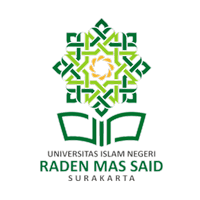Ahmad, T. (2023). Oral Traditions and Local Authority: Viewing the Indonesia Revolution through a Cultural Lens. Asian Studies Review, 49 (2). https://doi.org/10.1080/10357823.2024.2392267
Allen, G. (2004). Roland Barthes. London and New York: Routledge Taylor and Francis Group.
Anderson, B. (1991). Imagined Communities: Reflections on the Origin and Spread of Nationalism. London and New York: Verso. Revised Edition.
Barthes, R. (1972). Mythologies. Translated by Annette Lavers. New York: The Noonday Press, Farrar, Strauss and Giroux.
Bronner, S. J. (2011). Explaining Traditions: Folk Behavior in Modern Culture. University Press of Kentucky.
__________ and Dundes, A. (2007). Folk Ideas as Units of Worldview in Meaning of Folklore: The Analytical Essays of Alan Dundes. Utah State University Press. https://muse.jhu.edu/pub/187/oa_monograph/chapter/203912
Christomy, T. (2008). Karuhun, Space, Place and Narrative in Signs of the Wali: Narrative at the Sacred Sites in Pamijahan, West Java. ANU Press. https://www.jstor.org/stable/j.ctt24h38j.8
Ciptandi, F., Oetari, F and Rosandini, M. (2024). Exploring the Sundanese Culture in the Makuta Binokasih as a Cultural Asset of the Sumedang Larang Kingdom. Cogent Arts and Humanities, 11 (1). https://www.tandfonline.com/doi/full/10.1080/23311983.2024.2426361
Dwiputra, D. F. K etc. (2024). From Tradition to Future: Sundanese Indigenous Laws as the Vanguard of Environmental Conservation and Disaster Mitigation. The Journal of Indonesia Sustainable Development Planning, 5 (2). https://journal.pusbindiklatren.bappenas.go.id/lib/jisdep/article/view/559
Dundes, A. (1984). Sacred Narrative, Reading in the Theory of Myth. Barkeley: University of California Press.
__________. (1972). Folk Ideas as Units of Worldview. J. Am. Folklore, 84 (331), 93-103. https://muse.jhu.edu/pub/187/oa_monograph/chapter/203912
__________. (1980). Interpreting Folklore. Indiana University Press.
Ekadjati, E. S. (1984). Sundanese Society and Its Culture. Girimukti Pusaka.
Finnegan, R. (1992). Oral Traditions and the Verbal Arts: A Guide to Research Practices. London and New York: Routledge.
Fairclough, N. (2013). Language and Power. London: Routledge. 2nd Edition
Georges, R., and Michael, J. (1995). Folkloristics: An Introduction. Bloomington Indiana University Press.
Haerudin, D. and Koswara, D. (2018). Documentation and Transliteration of Ancient Sundanese Manuscript in the Jatigede Dam Area of Sumedang Regency. Advances in Social Science, education and Humanities Research, 258. 2nd International Conference on Research of Educational Administration and Management.
Havelock, E. A. (1986). The Muse Learns to Write: Reflections on Orality and Literacy from Antiquity to the Present. New Haven and London: Yale University Press.
Heller, A. (2001). Cultural Memory, Identity and Civil Society. IPG 2 https://library.fes.de/pdf-files/ipg/ipg-2001-2/artheller.pdf
Hidyatullah, A., Anshori, D. S and Sastromiharjo, A. (2025). Qur’anic Values in Sundanese Culture: A Study of Politeness Principles in Paribahasa. IBDA: Jurnal Kajian Islam, 23 (1). https://ejournal.uinsaizu.ac.id/index.php/ibda/article/view/12736
Iskandar, B. S. etc. Local Knowledge of the Sundanese Community on Traditional Foods to Enhance the Family Food Security. Etnosia, 8 (1). https://journal.unhas.ac.id/index.php/etnosia/article/view/24461
Levi-Strauss, C. (1955). The Structural Study of Myth. The Journal of American Folklore, 68 (270). 428-444. https://www.people.iup.edu/sherwood/Archived-Courses/ENGL752SuII-05/Docs/Structural_Study_of_Myth.pdf
Noorduyn, J. and Teeuw, A. (2006). Three Old Sundanese Poems, Leiden: KITLV Press.
Omoniyi, T and White, G. (2006). The Sociolinguistics of Identity. New York: Continuum.
Patton, M. Q. (2015). Qualitative Research and Evaluation Methods: Integrating Theory and Practice. California: Sage Publication.
Puspita, N. W. (2021). Sundanese Imagery and Education Values in Sundanese Phrases and Proverbs. Proceedings of the Fifth International Conference on Language, Literature, Culture and Education.
Riani, etc. (2023). Revealing the Meaning of Plant Lexicons in Sundanese Proverbs. Eurasian Journal of Applied Linguistics, 9 (1). 262-273. http://dx.doi.org/10.32601/ejal.901022
Rosidi, A. (2000). Ensiklopedi Sunda: Nature, Human and Culture Including Cirebon and Betawi Cultures. Jakarta: Pustaka Jaya.
Smith, L. (2006). Uses of Heritage. USA and Canada: Routledge.
Sukayat, T. (2023). The Relationship of Islamic Values and Sundaneseness in Sundanese Proverbs as Da’wah Messages. Ilmu Dahwah: Academic Journal for Homiletic Studies, 17 (1), https://journal.uinsgd.ac.id/index.php/idajhs/article/view/25877
Susanti, N. H dan Basid, A. (2024). Local Religious Values of Javanese-Sundanese Religion: Resistance to Modernity. Walisongo: Jurnal Penelitian Sosial Keagamaan, 32 (1). https://journal.walisongo.ac.id/index.php/walisongo/article/view/22494
Sunarni, S and Hamidah. (2020). The Contribution of Sundanese Expressions and Proverbs as Local Wisdom to Strengthen the National Identity in Facing the Industrial Era 4.0. Proceedings of First International Conference on Culture, Education, Linguistics and Literature. https://eudl.eu/doi/10.4108/eai.5-8-2019.2291044
Vansina, J. (1985). Oral Tradition as History. University of Wisconsin Press.
Yusuf, M. D. (2024). Sundanese Culture Through Digital Literacy: Efforts to Raise Public Awareness of Local Cultural Heritage. Dialektika, 22 (2). http://jurnaldialektika.com/index.php/piani/article/view/305


